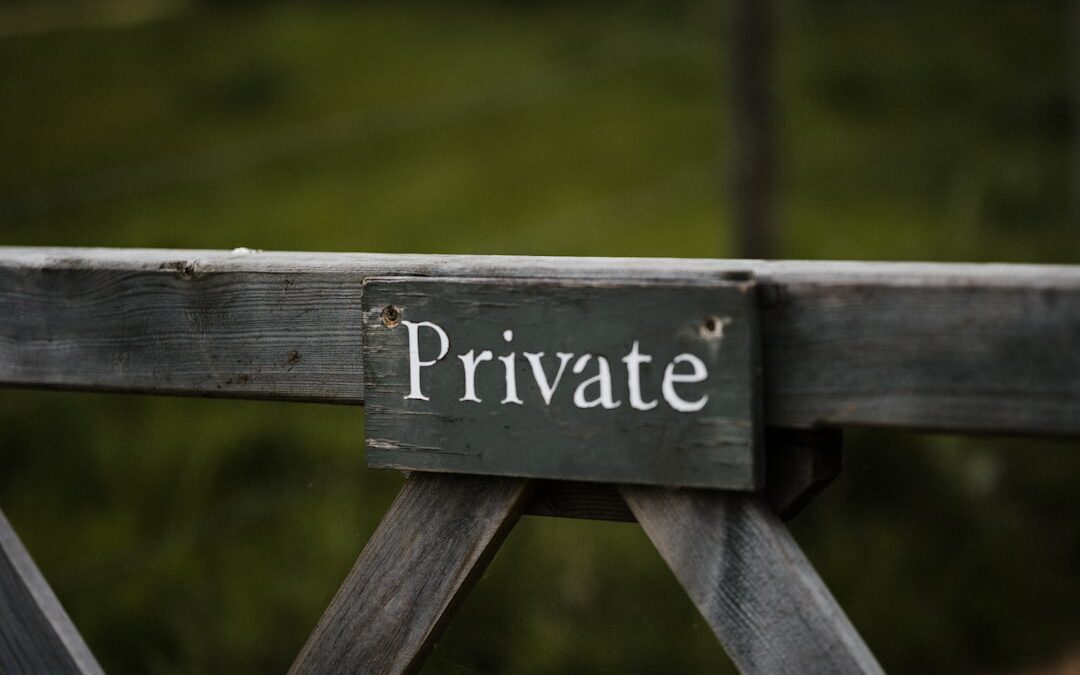
Private School Benefits and Comparisons for Families in Houston, Texas
A Comprehensive Guide

A Comprehensive Guide

Choosing the right private school for your child is a pivotal decision that can shape your child’s future. With numerous options available, ranging from Christian schools to prestigious academies boasting alumni that include CEOs and artists, the process can feel overwhelming. Each private school offers unique academic programs, extracurricular opportunities, and community environments. So, how do you find the best fit for your child? In this blog, we’ll explore strategies to navigate through these choices and make an informed decision.
Comparing Private and Public Schools
Image courtesy: Unsplash
Choosing the right school for your child can feel like a monumental task. It involves sifting through endless options, weighing the pros and cons, and ultimately finding the perfect fit for your child’s unique needs. While both private and public schools have their merits, understanding key differences can help you make an informed decision. Let’s dive deeper into the comparisons.
Differences in Academic Programs
One of the main distinctions between private and public schools is their academic programs. Private schools often have more flexibility in designing their curriculum. This means they can offer specialized programs that focus on specific subjects or innovative teaching methods. These tailored programs might better align with your child’s interests and strengths, allowing for a more personalized education experience.
In contrast, public schools follow state-mandated guidelines which can limit curriculum flexibility. However, this standardization ensures consistency and typically includes a broad range of subjects to ensure a well-rounded education. Whether your child thrives in a standard curriculum or needs a more tailored approach can guide your decision.
Quality of Education and Student Performance
Quality is key when it comes to education. Private schools often boast smaller class sizes, which allows for more individualized attention. Teachers can focus on each student’s needs, potentially leading to higher student performance and engagement. Furthermore, private schools may have access to more resources and extracurricular opportunities, contributing to an enriched learning environment.
On the flip side, public schools offer a level of diversity in both student body and teaching styles that can be equally beneficial. They’re often equipped with experienced teachers who bring a variety of insights and perspectives to the classroom. This diverse environment can prepare students for real-world situations and enhance social skills. Both types of institutions have their strengths; the ideal choice depends on what you envision for your child’s educational journey.
Preparing for Future Life: Which is Better?
A key question many parents face is: which type of school prepares my child better for the future? Private schools often emphasize college readiness with rigorous academic standards and college-preparatory programs. They might have connections or partnerships with higher education institutions, which could give students a leg-up in the college admissions process.
Public schools, on the other hand, prepare students for the varied challenges of real life by exposing them to a wider social and cultural mix. This environment may better equip students with the soft skills necessary for navigating today’s world.
Ultimately, the right choice depends on your child’s aspirations and the skills you wish for them to nurture. It’s about finding the school that aligns with your child’s future goals and your family’s values.
Factors to Consider When Choosing a Private School
Once you decide that a private school is the route for your child, the next step is choosing the right one. This is no small feat, as private schools vary greatly in their offerings, environments, and cultures. Here are some key factors to consider:
Academic Curriculum and Extracurricular Activities
When evaluating private schools, look closely at their academic curriculum. Does it offer the courses and programs that align with your child’s interests and future plans? Is there a mix of traditional and innovative teaching methods?
Additionally, consider the range of extracurricular activities. These programs play a crucial role in your child’s development, offering a chance to explore interests, build skills, and make connections beyond the classroom. Schools with robust extracurricular offerings might provide opportunities in athletics, arts, music, and more that can enrich your child’s educational experience.
School Accountability and Reputation
Choosing a reputable school where accountability is prioritized can impact your child’s success. Research schools’ track records, including their accreditation status, test scores, and alumni achievements. A school with a solid reputation is likely committed to maintaining high educational standards and accountability.
School accountability can also be reflected in how they communicate with parents. Are they transparent about their educational outcomes and processes? Regular updates and open school policies are indicative of a culture that values parental involvement and student success.
College Admissions Success Rates
College admissions success rates serve as a quantifiable measure of a school’s effectiveness. Many private schools pride themselves on their students’ college acceptance rates. Check the academic achievements and college admissions percentages of their graduates.
Consider what colleges and universities the school’s alumni are attending — are they schools that align with your aspirations for your child? This data can give you an idea of how well-equipped the school is at preparing students for higher education.
Making the choice of where your child spends their formative years can feel overwhelming, but understanding and considering these factors can simplify the process. Remember, the best private school is one that caters to your child’s strengths, prepares them for the future, and supports your family’s educational values.
Financial Considerations
When it comes to choosing the best private school for your child, financial considerations can play a significant role. Private schooling can offer unique opportunities and tailored education, but it’s essential to weigh these benefits against the costs and explore various financial options available to you.
Cost of Private Schooling vs. Public School Alternatives
Understanding the cost difference between private and public schooling is necessary. Private schools are often independently funded, which means they usually charge tuition fees that can vary widely depending on factors like location, reputation, and academic programs. While public schools are funded by government sources and generally don’t require tuition fees, other expenses such as uniforms, extracurricular activities, or transportation may still apply.
Here’s a simple breakdown of the typical expenses you might incur with private schooling:
– Tuition Fees: The main expense, which can range from a few thousand to over thirty thousand dollars per year, depending on the institution.
– Enrollment Fees: Additional costs for registration and other administrative processes.
– Books and Supplies: While some private schools include these in their fees, others might charge extra.
– Extracurricular Activities: Participation in sports, arts, and clubs might come with extra costs.
These expenses should be compared thoughtfully against the cost-free nature of public schools to determine if the benefits outweigh the financial commitment.
Financial Aid and Scholarships
The good news is that many private schools offer financial aid and scholarships to assist families in managing these costs. This aid can significantly reduce the burden and make private education more accessible.
Here are a few steps to explore these opportunities:
– Research Available Scholarships: Some are merit-based, while others are need-based. Look for scholarships that match your child’s strengths and interests.
– Contact the School’s Financial Aid Office: Understand the financial aid options and application processes. They can provide valuable guidance on the required documentation and deadlines.
– Consider Applying Early: Financial aid resources might be limited, so applying early can improve your chances of securing assistance.
Remember, each school may have different qualifications, so it’s beneficial to reach out to multiple institutions to discover the best options for your family.
Comparing Costs in High-Performing Public School Districts
In some cases, public schools in high-performing districts might closely rival private institutions in terms of quality education and resources, often at a fraction of the cost. If financial constraints are a concern, researching and considering these high-achieving public schools could be a valuable alternative.
Here’s what you can do:
– Assess Local School Ratings: Websites and local reports often rate schools based on performance, parent reviews, and academic achievements.
– Visit Schools: Take a look at the facilities and see if they meet your expectations for your child’s education.
– Inquire About Specialized Programs: Many top-performing public schools offer advanced placement courses, specialized academic tracks, or arts programs that might serve your child’s interests and goals.
By weighing all these considerations, you can make an informed decision that aligns with your financial situation and educational preferences.
Tips for Selecting the Best Private School
Image courtesy: Unsplash
Finding the right school for your child involves more than just looking at rankings and statistics. It’s about aligning with your family’s values, nurturing your child’s strengths, and ensuring a quality education that lays the foundation for their future success.
Assessing School Values and Teaching Philosophy
Each private school often has unique guiding principles and educational philosophies. Some may focus on a faith-based curriculum, like a Christian school, while others emphasize arts or STEM programs. Understanding these aspects is crucial to ensure they resonate with your family’s values and your child’s learning style.
– Review the School’s Mission Statement: It can give you a good sense of their educational focus and priorities.
– Consider Your Child’s Needs: Reflect on whether the school’s values support your child’s interests and personal development.
– Evaluate Cultural Fit: Consider how the school’s environment and community align with your expectations and your child’s comfort.
Evaluating Teacher Qualifications and Retention
Teachers play a pivotal role in shaping your child’s educational experience. As such, qualified and experienced educators are a hallmark of a quality private education.
Here’s how you can evaluate this aspect:
– Inquire About Teacher Qualifications: Look for teachers with advanced degrees or specialized training in their subjects.
– Investigate Retention Rates: High teacher turnover might be a red flag, while long-tenured staff can indicate a supportive work environment and school satisfaction.
Additionally, seek feedback on teacher accessibility and their approach to engaging students, as these factors can greatly influence your child’s day-to-day learning.
Visiting Schools and Interviewing Alumni
Nothing beats experiencing a school firsthand. Visiting potential schools can help you gauge the facilities, meet teachers, and get a feel for the school community. Likewise, speaking with alumni provides insight into the long-term benefits and outcomes of the school’s education.
During your visit:
– Observe Classes: This can give you a glimpse into the teaching style and classroom environment.
– Tour Facilities: Check out the library, sports areas, art studios, and other facilities important to your child’s interests.
– Engage with Current Students: Asking them about their experiences can offer realistic viewpoints on daily life at the school.
Talking to alumni can also shed light on how well the school prepares students for college admissions and life beyond academia. Notice if they felt the school equipped them adequately for their next steps, whether that be further education or entering a career.
With these tips, you’ll be one step closer to choosing a private school that truly benefits your child’s educational journey and future aspirations. Happy school hunting!
Finding the best private school for your child is an important decision that requires careful consideration. By assessing your child’s specific needs and interests, researching schools thoroughly, and prioritizing what matters most, you can make an informed choice. Don’t forget to visit prospective schools and speak with teachers, parents, and even alumni to get a firsthand feel of the environment. Trust your instincts and choose a place where your child will not only learn but also thrive and be happy.

Essential Tips and Strategies

Photo by Edmond Dantès
How to Harness Their Power for Your College Journey
Private school alumni networks hold significant sway in the college admissions landscape. These networks, fortified by generations of graduates and a tradition of mutual support, can be a key factor in providing current students with a competitive edge. For students aspiring to gain entry into prestigious colleges and universities, the strategic use of alumni connections often proves to be an invaluable asset. This extends beyond mere name recognition – active engagement with alumni can lead to mentorships, internships, and letters of recommendation that carry weight with admissions committees.
The importance of leveraging alumni networks is not only recognized by students but is often facilitated by the private schools themselves. Many institutions have structured programs designed to cultivate relationships between alumni and current students. These programs serve to bridge the gap, providing structured environments for networking events, career guidance, and experiential learning opportunities that can enrich a student’s application and appeal to college admissions offices.
However, the effectiveness of an alumni network can largely depend on how well a student utilizes these resources. Engaging with alumni requires a proactive approach, where students must often take the initiative to attend events, seek out mentorship, and communicate their academic and professional goals. By doing so, students demonstrate their commitment and diligence, qualities that, when paired with the backing of a strong alumni network, can significantly enhance their college admissions prospects.
The Role of Alumni Networks in College Admissions
Alumni networks play a strategic role in college admissions by offering prospective students networking opportunities and occasionally influencing the admissions process through recommendations.
Understanding Alumni Influence
Alumni of private schools often hold influential positions in various fields, including education. Institutions value their alumni, acknowledging that long-term relationships contribute to a legacy of success and can create a positive feedback loop for admissions. Admissions committees may consider an applicant’s alumni connections as one of many factors, especially if an alumnus is actively engaged with the school and known for their support.
Alumni EngagementPotential Impact on AdmissionsFinancial SupportMay increase alumni’s sway in admissionsRegular VolunteerCould lead to a stronger considerationNotable AchieverAlumni’s endorsement might carry more weight
Advantages of Alumni Connections
Students with alumni connections can often access a wealth of resources that might give them an edge in the admissions process.
Networking Opportunities: Alumni may provide valuable guidance and mentorship.
Insider Knowledge: They can offer insights into the school’s culture and expectations.
Alumni recommendations can be a testament to the student’s potential compatibility with an institution’s values and community. These connections are especially advantageous during interviews or admissions events, where a familiar face can help a candidate stand out.
Strategies for Engaging with Private School Alumni
Leveraging alumni networks effectively can open doors for prospective college students. This section outlines practical ways to connect with private school alumni to enhance college admission prospects.
Building Relationships with Alumni
To foster long-lasting connections with alumni, students should start by actively participating in school’s alumni programs. Establishing a genuine rapport by showing interest in alumni careers and seeking advice can lead to mentorship.
Attend School-Sponsored Alumni Mixers: These events are often facilitated by the school, allowing students to interact with graduates.
Create a LinkedIn Profile: A professional online presence can help students to connect with alumni in relevant fields.
Maximizing Networking Opportunities
Effective networking involves more than just making initial contact; it requires consistent communication and following up. Students can:
Request Informational Interviews: Engaging in one-on-one conversations with alumni provides personal insights and advice on the college admissions process.
Join Alumni Groups: Many private schools have alumni groups on social networking sites which students can join to stay updated on events and opportunities.
Utilizing Alumni Events for College Admission Success
Alumni events can be strategic platforms for students aiming to enter competitive colleges. They should:
Prepare Questions in Advance: Having specific questions about colleges and programs shows preparation and dedication.
Express Appreciation: A thank-you note after an event demonstrates politeness and helps maintain the relationship.
Ethical Considerations in Leveraging Alumni Ties
Leveraging alumni networks can influence college admissions, but it’s vital to consider the ethics of such practices. Equity in access and the impact of socioeconomic status must be examined.
Ensuring Fair Admission Practices
Colleges typically maintain policies meant to foster fair admissions practices. These policies aim to evaluate candidates based on merit and potential rather than on their connections. When alumni ties are considered in the admissions process, it can create a perception of unfair advantage. This is especially true if alumni relationships become a significant factor over a candidate’s academic achievements and extracurricular merits.
Transparency: Colleges should be transparent about how alumni connections factor into admissions decisions. Clear criteria can mitigate misunderstandings about the admissions process.
Merit-based Evaluation: Admissions committees should ensure that alumni connections are not the deciding factor in the application process; merit and individual achievement should remain at the core.
Mitigating Socio-Economic Disparities
The use of alumni networks in admissions can exacerbate socio-economic divides. Students from less privileged backgrounds might not have the same legacy opportunities as those from wealthier, more connected families.
Equal Opportunities: Institutions need to provide equal consideration for applicants regardless of their alumni ties to prevent exacerbating social inequities.
Support Programs: Scholarships and outreach programs can help balance the scales, giving students from diverse socio-economic backgrounds a fair chance at admission.
Implementing measures to assure admissions equity requires a conscientious effort from educational institutions to maintain the integrity of their processes and the value of earned achievements.

Spring Activities to Enrich Private Elementary Learning
Outdoor education plays a crucial role in the all-round development of students, particularly in the elementary years where sensory experiences and hands-on activities lay the foundation for lifelong learning. Private elementary schools have the unique opportunity to tailor spring activities that foster an appreciation for nature, encourage physical activity, and nurture environmental stewardship among students. As the days grow longer and the temperatures milder, spring offers a plethora of opportunities for educators to take the classroom outdoors and integrate academic concepts with the blooming world around them.
Field trips to local parks, botanical gardens, and nature reserves become living classrooms where students can observe ecosystems in action and witness the change of seasons up close. Biology comes to life as students track the growth of plants and the emergence of insects, enabling them to make real-world connections to the science lessons taught within school walls. Teachers can guide students through activities such as identifying native species, planting gardens, or participating in citizen science projects which contribute valuable data to local environmental efforts.
Additionally, incorporating outdoor physical education activities helps children develop their motor skills, coordination, and confidence. Activities like orienteering and team-building sports not only support physical health but also teach valuable life skills, such as problem-solving, leadership, and cooperation. By stepping out of the traditional indoor setting, students are provided with a stimulating environment where learning is dynamic and engaging, thus enhancing their educational experience and fostering a sense of excitement about learning.
Benefits of Outdoor Education
Outdoor education offers significant advantages for private elementary students, particularly in fostering a connection to nature, improving physical well-being, and enhancing social skills critical at this formative stage.
Fostering Environmental Stewardship
Outdoor education engages students directly with the environment, nurturing a sense of responsibility and connection to the natural world. They learn about local ecosystems and develop an understanding of their impact on the planet, which can lead to lifelong environmental stewardship.
Awareness: Encountering local wildlife and plant species up-close increases student awareness about biodiversity.
Conservation: Activities like recycling projects and nature walks teach children the importance of conservation efforts.
Improving Physical Health
Physical activity is a cornerstone of outdoor education, contributing to overall healthier lifestyles for children. Regular exposure to sunlight provides vitamin D, while diverse physical activities build strength and coordination.
Exercise: Outdoor games and hiking promote cardiorespiratory fitness.
Motor Skills: Climbing trees or navigating obstacle courses enhances fine and gross motor skills.
Enhancing Social Skills
Being outdoors provides children with unstructured playtime, which is crucial for social development. They learn to cooperate, communicate, and solve problems together.
Teamwork: Group challenges demand collaboration and role-sharing.
Communication: Negotiating play scenarios refines verbal and non-verbal communication skills.
Program Planning and Safety
When planning outdoor educational activities for private elementary students, educators must balance engaging curriculum development with meticulous safety measures to ensure a safe and inclusive learning environment.
Creating an Inclusive Curriculum
Educators should design programs that cater to a diverse range of interests and abilities. Activities may include:
Nature Walks: Structured to be accessible for all fitness levels.
Team-building Games: Modified to ensure every student can participate.
Weather Considerations for Spring
Spring weather can be unpredictable, and planning must account for this:
Weather ConditionActivity AdjustmentRainProvide waterproof gear and indoor alternatives.SunSchedule sun-safe times and enforce sunscreen use.
Essential Safety Guidelines
Safety is paramount for any outdoor education program:
First Aid: A trained professional present at all times.
Emergency Procedures: Regular drills and clear instructions for the students.
Equipment Check: Regular inspection of all outdoor equipment for safety.
Supervision Ratios: Maintain the appropriate adult-to-student ratio to ensure constant supervision.
Spring Activity Ideas
March and April bring warmer temperatures and longer days, perfect for integrating hands-on, outdoor learning activities. These springtime projects help students engage with the natural world, promote physical activity, and stimulate creativity.
Gardening Projects
Elementary students can learn about botany and the environment through Gardening Projects. Teachers can allocate small plots for each child or group of children to manage.
Planting: Students plant seeds or seedlings, learning about the growth cycle of plants.
Maintenance: They water, weed, and monitor their plants, observing the conditions necessary for growth.
Harvesting: If appropriate, children can harvest edible plants and learn about healthy food sources.
Nature Walks and Scavenger Hunts
Nature Walks and Scavenger Hunts encourage observation and exploration.
Identification: Provide students with checklists of local flora and fauna to identify.
Sensory Walks: Encourage them to engage their senses by listening for bird calls or feeling different textures of leaves.
Scavenger Hunts: Create themed hunts to find objects of certain shapes, colors, or numbers in nature.
Outdoor Art and Creativity
Linking art with nature, Outdoor Art and Creativity sessions allow children’s imaginations to flourish.
Natural Materials: They can use sticks, leaves, rocks, and seeds to create artworks.
Land Art: Encourage the arrangement of natural elements to create large-scale outdoor pieces.
Photography: If cameras are available, students can photograph scenes that capture the essence of spring.
Evaluating the Impact
Evaluating the impact of outdoor education activities is essential to ensure that they meet educational goals and provide a beneficial learning experience for private elementary students.
Assessment Strategies
Instructors can assess the effectiveness of spring activities through observation checklists and student portfolios. These tools help in tracking the progress and engagement of each student during the activity.
Observation Checklists
Tailored to specific activities (e.g., plant identification, team-building exercises)
Document student participation and understanding
Student Portfolios
Collections of student work (e.g., sketches of plants, reflective journals)
Show growth over the course of the activity
Gathering Student Feedback
After activities, it’s critical to gather student feedback through surveys or group discussions. Students may express what they enjoyed or what could be improved, providing valuable insights.
Surveys
Capture individual student feelings and learning outcomes
Can include both multiple-choice and open-ended questions
Group Discussions
Encourage students to share experiences in a more informal setting
Can reveal insights not captured in surveys
Parental Involvement and Feedback
Parental feedback is obtained largely through questionnaires and parent-teacher conferences. Parents’ perceptions of their child’s enjoyment and learning can guide future activities.